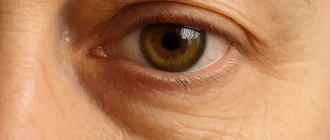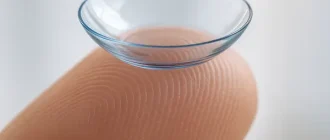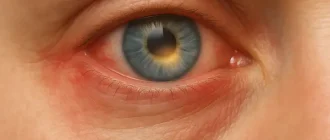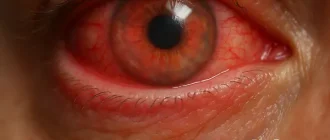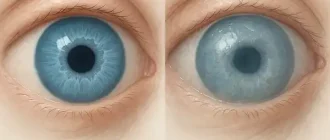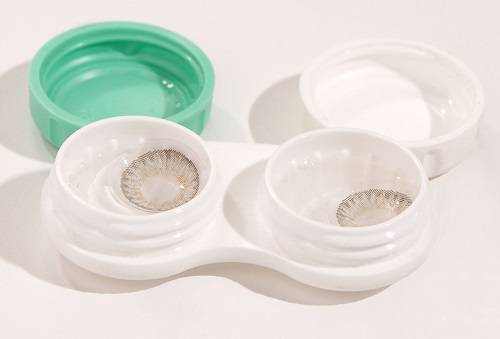Photophobia, which is also called light sensitivity, causes eye discomfort in bright light. It is a condition that makes people more sensitive to light than usual.
When light enters the eye through the cornea, the iris changes shape to correctly focus it on the retina. Photoreceptors in the eye get stimulated by this light and send signals to the brain through the optic nerve.
Photophobia can result in severe eye pain, even in low light, and can be caused by various factors like eye problems, inflammation in the eye, or excessive wearing of contact lenses.
Symptoms You Have a Photophobia
It must be admitted that photophobia has many symptoms, both directly related to vision and to the person’s general condition. Here are frequent signs of sensitivity to light:
- Physical discomforts: People who experience photophobia may feel numerous physical symptoms such as headaches or head pain, vestibular issues such as dizziness and nausea, visual symptoms like blurred vision or eye pain, and a sense of dryness or a feeling that eyes are excessively bright.
- Extreme sensitivity to light: Photophobia is an extreme sensitivity and aversion to light, even in moderate levels of artificial light. You may tear, squint and experience sudden discomfort in bright light. Even regular lighting might appear excessively bright.
- Other sensory disturbances: Some other physical symptoms include feeling like shutting eyes while exposed to light, having bright-colored spots even in the dark with closed eyes, difficulty reading or looking at pictures or text, and pain or discomfort.
- Accompanied symptoms: Photophobia is often accompanied by other symptoms such as fatigue, nausea, and head pain. The intensity of photophobia may vary according to the cause.
- Recurrent and benign experiences: Photophobia is often a recurrent and benign (not medically serious) experience but may develop due to a medical condition.
- One-eye photophobia: In some cases of eye trauma, photophobia might affect only one eye instead of both.
- Medical conditions: Migraines are the most common cause of recurrent photophobia. Other medical conditions such as facial neuropathy, head trauma, fibromyalgia, tension headaches, meningitis, optic nerve disease, uveitis, retinal issues and even autism can cause photophobia.
- Medications: Some medications such as Tetracycline (an antibiotic), anxiety, depression, psychosis, drugs, and drug withdrawal can also induce photophobia.
- Sensory disturbances causing photophobia: Dilated pupils, light-colored eyes, migraines, trigeminal neuralgia, meningitis, uveitis, and retinal detachment can also induce pain due to inflammation and injury to structures in or near the eyes.
- Emotional symptoms: Photophobia may also have emotional symptoms such as anxiety, panic, mood disorders, and social isolation due to negative physical consequences and increased risk of psychological disorders.
Causes
Undoubtedly, an important component in the prevention and treatment of photophobia is the identification of the cause of this disease (condition). Based on a fairly extensive medical practice, ophthalmologists distinguish the following factors that cause hypersensitivity to light:
- Dry eyes: The most common cause of photophobia is dry eyes. This happens when a person’s tear production is inadequate to provide sufficient lubrication for the eyes, leading to discomfort in bright light.
- Migraines: Approximately 80% of individuals who are afflicted with migraines have sensitivity to light. Photophobia is recognized as one of the indicators for identifying migraines, and it is believed to be a reliable indicator for the severe headaches almost 98% of the time.
- Neuro-ophthalmic disorders: Sensitivity to light, known as photophobia, is commonly experienced in various neuro-ophthalmic disorders like iritis, uveitis, and corneal disease. Conversely, photophobia can also be a result of certain basic eye conditions like retinal dystrophies.
- Blepharospasm: People with blepharospasm, a condition that causes involuntary spasms of the eyelid muscles, experience photophobia. Bright lights, reading, watching television, and stressful situations can trigger their spasms.
- Light-induced headaches: Some people develop headaches due to exposure to bright light. These headaches occur within minutes of exposure and can last up to several hours. They are not migraines, and the underlying cause is unknown.
- Medication side effects: Certain medications can cause photophobia as a side effect. Examples include tetracyclines, sulfa drugs, and antipsychotic medications.
- Other medical conditions: Sensitivity to light can also manifest in other health issues such as inflammation of the membranes surrounding the brain and spinal cord, bleeding in the space between the brain and its protective coverings, and tumors in the pituitary gland. There are instances where it serves as an indication of an undiscovered medical problem.
Diagnosis
Photophobia is recognized as a strong oversensitivity and aversion to bright light, often causing eye pain, tears, and squinting. Many ophthalmic and neurological disorders, including migraines, uveitis, and retinal dystrophies, are frequently associated with this symptom.
In order to determine if someone has photophobia, a medical professional will need to look at their medical records, give them a physical check-up, and examine their eyes. Additionally, they may use specific testing methods such as ophthalmoscopy and visual field testing to detect any potential eye conditions or problems.
Further examinations, such as tonometry, optical coherence tomography (OCT), and fluorescein angiography, may be conducted depending on the patient’s symptoms and any observations made during the physical evaluation.
Recognizing photophobia is a significant action as it aids in finding the best treatment for the underlying reason for increased light sensitivity.
Treatment for Photophobia
Photophobia, a sensitivity to light, can range from discomfort to severe pain and can negatively impact daily life. While there is no medication widely proven to reduce its effects, various treatment options are available. Precision-tinted glasses, specifically those tinted with FL-41, are the single-most effective tool for combating photophobia, as research has shown these lenses to relieve even the most chronic of light-sensitive individuals. Tryptamine-based medications such as amitriptyline and gabapentin have also been successful in relieving pain.
Home care options such as staying out of sunlight and keeping the lights dimmed inside can also help alleviate discomfort. However, dark glasses are relatively counterproductive indoors and tinted lenses such as FL-41 are more appropriate.
If photophobia is caused by an underlying condition like dry eyes or migraines, treating these causes aggressively can lead to an improvement in symptoms. It is crucial for people experiencing photophobia to go to a medical professional and receive a thorough examination to identify the root cause and the appropriate treatment plan.

Prevention
It can be difficult to avoid photophobia as it is frequently a symptom of other hidden conditions. Nonetheless, there are certain approaches that may lower the regularity and intensity of light susceptibility. The following are some precautionary steps that people can use:
- Avoiding triggers – People with migraine-associated photophobia can try to identify their triggers and avoid them. Common triggers can include stress, certain types of foods, hormonal changes, and environmental changes.
- Practicing good hygiene – To prevent infections that could cause photophobia, it is vital to maintain clean hands and refrain from touching your eyes. Another crucial step is to avoid sharing contact lenses in order to prevent the spread of infections.
- Allowing more natural light indoors – Spending more time outdoors or near windows can help the eyes adjust to light. Bright light exposure therapy can also help people with seasonal affective disorder or depression.
- Wearing protective eyewear – Protective eyewear such as polarized sunglasses, hats, and visors can shield the eyes from bright light. Prescription eyewear with a rose tint called FL-41 may also help since it filters light that can trigger photophobia.
- Seeking medical attention – If you are experiencing severe photophobia and other symptoms associated with certain conditions such as meningitis, encephalitis, or corneal abrasion, seek immediate medical care.
- Treating underlying medical conditions – Treating the underlying cause of photophobia can help reduce symptoms. This may involve medication, surgery, or other therapies depending on the underlying condition.
Preventing photophobia can be a multi-faceted approach involving avoiding triggers, practicing good hygiene, wearing protective eyewear, seeking medical attention, and treating underlying medical conditions. Individuals with light sensitivity should work closely with their healthcare provider to identify the best preventive measures for their specific condition.
